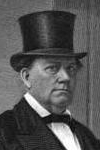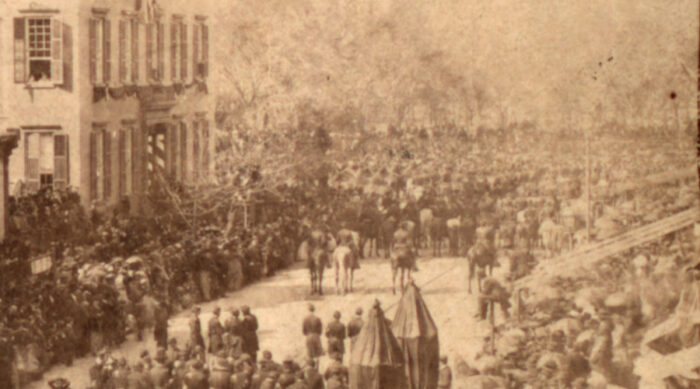
Last week, I introduced the story that Abraham Lincoln, well before he was President, had been involved in the funeral of his predecessor John Quincy Adams. I also recounted Lincoln’s repudiation of the story. Today, a closer look at what really happened
Despite not being a member of the sub-committee that actually made the decisions about the funeral, Lincoln was listed on the handbill printed two days before the funeral as a member of the Committee of Arrangements. This group was to walk behind a number of military companies, a band, the chaplains of both House and Senate, and the doctors who had attended Adams and directly in front of the pallbearers carrying Adams. What we do not know is whether Lincoln actually was a part of this group. As mentioned, he had not been selected from among this group to actually be in charge of arrangements, so he might have chosen to walk with the rest of the House of Representatives. Reports on the funeral in the newspapers of the day are silent on this – or repeat unquestioningly the list as drawn up before.
Right behind the coffin was a large number of people, including the entire House of Representatives, the Senate, President Polk, and concluding with “Citizens and Strangers.”
In short, other than – possibly – a special place in the procession, Lincoln had nothing to do with the funeral of John Quincy Adams; his presence on the committee cannot be taken for any special connection between the two presidents.
On the Monday following the funeral, Speaker Robert C. Winthrop told the House that he had made a mistake on the 24th, the day after Adams died, “under a misapprehension of the nature of the resolution under which it was authorized” and released a new list of 30 members of the House of Representatives. It included ten members of the original list.
While it still consisted of one member per state, it was a very different list, this time including only those who had been close to Adams during his lifetime. Most importantly, Lincoln was not one of them. The Representative from Illinois was John Wentworth, seen in the picture above, who had been in the House of Representatives since 1843, overlapping with Adams for almost 5 years. While Lincoln was the only one of the Illinois delegation to be, like Adams, a Whig – and which is why he was probably initially chosen, Wentworth, like Adams, was a staunch abolitionist and would, like Lincoln, later became a Republican, while the others members of the Illinois delegation, including three others who had served an equal amount of time with Adams, remained Democrats.

Adams did not remain at Congressional Cemetery very long. On Monday, March 6, his body left Washington for the last time. The 30 members of the new committee rode along on the train north.
The following Saturday, two weeks after the obsequies at Congressional cemetery, after stops in New York and Boston, the body and its entourage arrived in Quincy, Massachusetts, brought in a train pulled by a “new locomotive engine of great power” named John Quincy Adams. He was interred in a vault that he had had prepared in the Hancock Cemetery. Adams was later exhumed and moved across the street, where he remains today.
